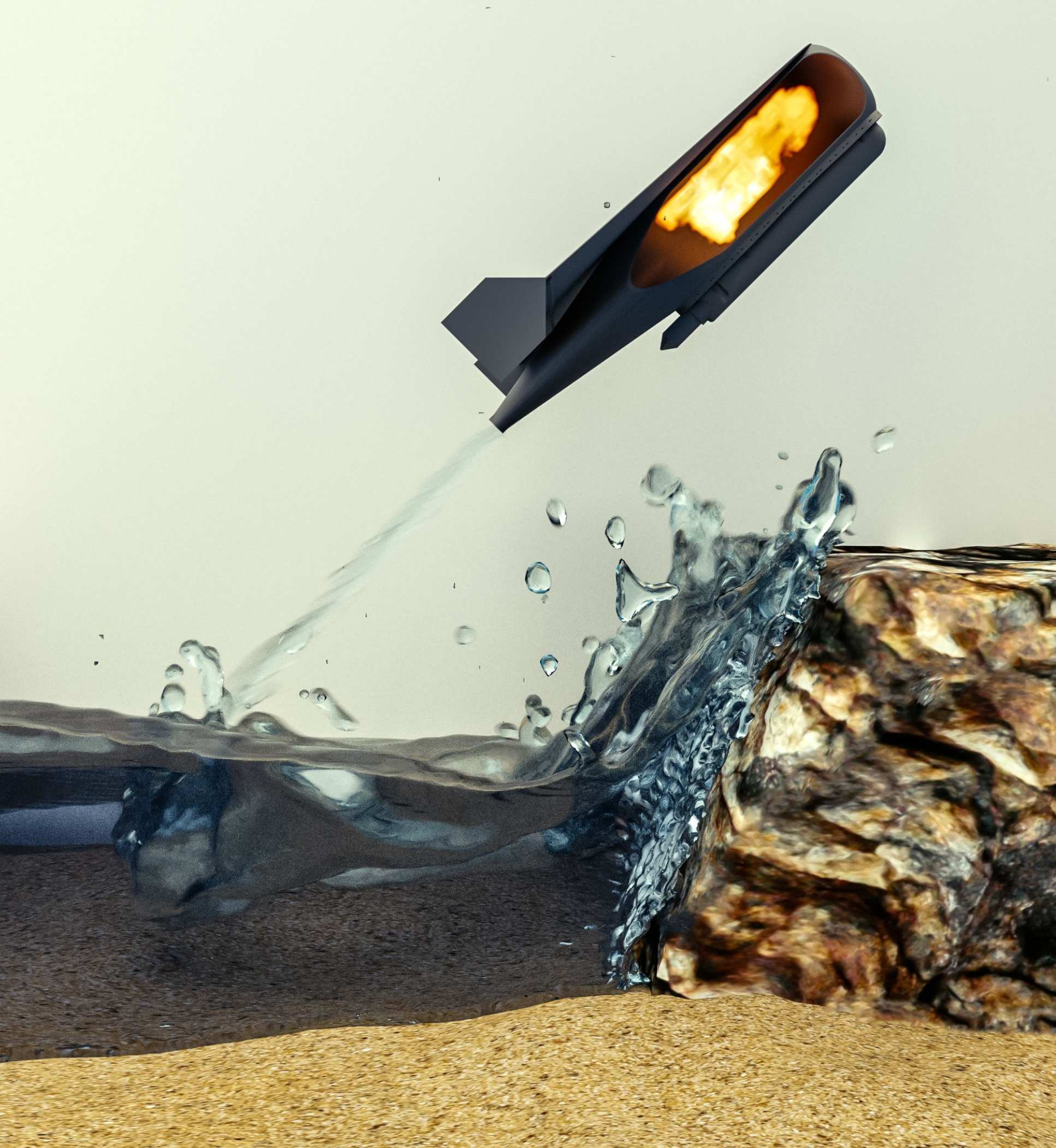(‘Flying fish’ robot can propel itself out of water and glide through the air)
2019/9/11 英国・インペリアル・カレッジ・ロンドン

・ インペリアル・カレッジ・ロンドンは、水中から自力で発進して滑空するロボットのシステムを開発。飛翔に必要なエネルギーは、燃焼室に僅か 0.2 グラムの炭化カルシウム粉末のみ。可動部分は、ロボットが浮いている水面から水を取り込む小型ポンプのみ。
・ このロボットは、離水後、自力で 25 メートル飛行できるので、洪水や海洋汚染環境下での監視を目的とした水のサンプル採集への利用が期待されている。
・ 水と炭化カルシウムの粉末は、燃焼室で結合し、燃焼可能なアセチレンガスを生成。それを燃焼、膨張させて爆発させ、取り込んだ水をジェットで噴出、ロボットは水面上から離水し、そのまま 25m 飛行する。
・ 水中から空中への移行は、エネルギー集約的なプロセスであり、多大なエネルギーが必要なので、飛行のために軽量化が必要な小型の飛行体では難しい技術。
・ 本研究では、水反応性化学物質を使用して、ロボットの積載重量を削減。燃焼室は受動的に満たされ、周囲の水がピストンの役割を担い、水と燃料が反応する可動部分ひとつのみで完全な燃焼サイクルが作製できる。
・ 研究チームでは、実験室や湖、波の立つタンクなどでロボットの試験を実施し、荒波の中からでも離水できることを実証。ロボットの重量の 25 倍の力を発生させて波を克服。
・ ロボットの重さは 160g で、着水後、水タンクに水を補給して、再度飛行が可能。これにより、水に浮き、電力補充の必要なく複数のポイントからサンプル採集が可能。電気を動力とするロボットよりも、エネルギーをより長い距離の飛行分蓄積できる。
・ 研究チームは現在、スイスのパートナーと協力して、高度な材料を使用した新しいタイプの車両を作製し、サンゴ礁周辺の海域や、沖合のエネルギープラットフォームをモニタリングするなど、様々な環境下で同ロボットの実証実験を行っている。
・ このような低エネルギーでテザーなしのロボットは、特に洪水や原子力事故などの災害時の監視に、多大な時間とリソースが必要な環境下では、とても役立つ。
・ 本研究の実証実験は、Brahmal Vasudevan 氏による慈善目的の寄贈で設立した Brahmal Vasudevan Multi-terrain Robotics Area で行われた。
URL: http://www.imperial.ac.uk/news/192826/flying-fish-robot-propel-itself-water/
(関連情報)
Science Robotics 掲載論文(アブストラクトのみ:全文は有料)
Consecutive aquatic jump-gliding with water-reactive fuel
URL: https://robotics.sciencemag.org/content/4/34/eaax7330
<NEDO海外技術情報より>
Abstract
Robotic vehicles that are capable of autonomously transitioning between various terrains and fluids have received notable attention in the past decade due to their potential to navigate previously unexplored and/or unpredictable environments. Specifically, aerial-aquatic mobility will enable robots to operate in cluttered aquatic environments and carry out a variety of sensing tasks. One of the principal challenges in the development of such vehicles is that the transition from water to flight is a power-intensive process. At a small scale, this is made more difficult by the limitations of electromechanical actuation and the unfavorable scaling of the physics involved. This paper investigates the use of solid reactants as a combustion gas source for consecutive aquatic jump-gliding sequences. We present an untethered robot that is capable of multiple launches from the water surface and of transitioning from jetting to a glide. The power required for aquatic jump-gliding is obtained by reacting calcium carbide powder with the available environmental water to produce combustible acetylene gas, allowing the robot to rapidly reach flight speed from water. The 160-gram robot could achieve a flight distance of 26 meters using 0.2 gram of calcium carbide. Here, the combustion process, jetting phase, and glide were modeled numerically and compared with experimental results. Combustion pressure and inertial measurements were collected on board during flight, and the vehicle trajectory and speed were analyzed using external tracking data. The proposed propulsion approach offers a promising solution for future high-power density aerial-aquatic propulsion in robotics.


